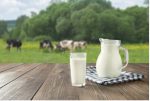Ashwagandha in Sanskrit means “smell of the horse” to correlate it with the strength of…
Read MoreMuscles – we rarely think about them until they feel sore. Did you know there are around 600 muscles in the human body performing a wide variety of functions ranging from supporting movement and pumping blood to lifting heavy things. There are three main kinds of muscles and they are:
We all know that men and women have different body compositions. But how does this play out when it comes to their muscles? Hormonal as well as genetic differences – more than 3,000 genes are differentially expressed in female and male skeletal muscle – between men and women lead to the variations that we see in their muscles.[2]Haizlip, K. M., B. C. Harrison, and L. A. Leinwand. “Sex-based differences in skeletal muscle kinetics and fiber-type composition.” Physiology 30, no. 1 (2015): 30-39.
Muscle tissue is known as ‘mamsa dhatu’ in ayurveda. The word ‘mamsa’ is derived from the Sanskrit root ‘mans’ meaning flesh or meat. Mamsa dhatu is thought to be formed from blood (rakta dhatu). It is considered to be predominantly made up of the earth element (prithvi mahabhuta), from which it gets its solid fleshy bulk. And it’s controlled by kapha dosha, which is composed of water and earth elements – usually when kapha dosha increases mamsa dhatu increases, and when it decreases mamsa dhatu decreases.
When mamsa dhatu is depleted, it is thought to result in joint pains, debility of sense organs, and the emaciation of cheeks, buttocks, etc. On the other hand, when mamsa dhatu is in excess it can lead to tumors, enlargement of lymph glands, and increase in the size of cheeks, thighs, abdomen, etc.
Most adults gradually start losing skeletal muscle mass after their early 40s. By some estimates men typically lose around 30% of their muscles over their lifetimes. This progressive loss of muscle mass is known as sarcopenia. It can impair metabolism and muscle performance and lead to a decline in physical mobility and function.[5][Slowing or reversing muscle loss].Mayo Clinic. [6][Lift weights to boost muscle].Harvard Health Publishing.
Healthy muscles are important for your overall health. They’re linked to:
Research indicates that healthy adults with higher levels of muscular strength have a 14% lower risk of death compared to those with lower muscular strength.[7]García-Hermoso, Antonio, Iván Cavero-Redondo, Robinson Ramírez-Vélez, Jonatan R. Ruiz, Francisco B. Ortega, Duck-Chul Lee, and Vicente Martínez-Vizcaíno. “Muscular strength as a predictor … Continue reading But that’s not all. Research has found people with better muscular strength have a lower risk of death in various populations, from those suffering from cardiovascular disease, cancer, peripheral artery disease, or renal failure to those suffering from chronic obstructive pulmonary disease, and rheumatoid arthritis.[8]Volaklis, Konstantinos A., Martin Halle, and Christa Meisinger. “Muscular strength as a strong predictor of mortality: A narrative review.” European journal of internal medicine 26, no. 5 … Continue reading
Muscles burn more calories than fat – 10 pounds of muscle will burn around 50 calories at rest while the same amount of fat will burn around 20 calories. This means that even when you’re lounging around you’ll burn more than twice the amount of calories if you carry more muscle than fat.[9][Want to Lose Weight? Build Muscle]. Cleveland Clinic. In fact, some research indicates that muscular strength is inversely related to obesity and may provide some protection against excessive abdominal fat as well as excessive body fat.[10]Jackson, Allen W., Duck‐Chul Lee, Xuemei Sui, James R. Morrow Jr, Timothy S. Church, Andrea L. Maslow, and Steven N. Blair. “Muscular strength is inversely related to prevalence and incidence … Continue reading
Weaker muscles equal less balance, mobility, and stamina. And this can increase your chances of falling and fractures. Research shows that people with sarcopenia are 2.3 times more likely to suffer from a fracture – for instance, a broken collarbone, hip, arm, wrist, or leg – after a fall. It has also been found that lower limb muscle strengthening exercises are effective at preventing falls in the elderly.[11]Ishigaki, Erika Y., Lidiane G. Ramos, Elisa S. Carvalho, and Adriana C. Lunardi. “Effectiveness of muscle strengthening and description of protocols for preventing falls in the elderly: a … Continue reading[12][Lift weights to boost muscle].Harvard Health Publishing.
Research indicates that muscle strength is related to bone mineral density even in young people.[13]Snow‐Harter, Christine, Mary Bouxsein, Barbara Lewis, Susan Charette, Pamela Weinstein, and Robert Marcus. “Muscle strength as a predictor of bone mineral density in young women.” … Continue reading So it shouldn’t come as a surprise that strength training (also known as resistance training) which helps to build muscle strength and mass can also make your bones stronger. How does that happen? Activities that apply stress on your bones can activate bone forming cells.[14][Strength training builds more than muscles]. Harvard Health Publishing.
Muscle strength is known to decline with age – on average, someone in their 80’s will have 40% lower strength than someone in their 40s. And muscle weakness, especially of the lower limbs, is linked to increased risk of falls and disability. Research indicates that strengthening muscles (through resistance training) can result in improvements in simple activities such as climbing steps, getting up from a chair quickly, or walking. This tells us how important muscle strength is for carrying on with our day to day activities.[15]Liu, Chiung‐ju, and Nancy K. Latham. “Progressive resistance strength training for improving physical function in older adults.” Cochrane database of systematic reviews 3 (2009).
Research has shown that there’s a link between increased lower body and upper body muscle strength and an increased ability to process, receive, and store information in older people.[16][Lift weights to boost muscle]. Harvard Health Publishing.
Many factors play a role in keeping your muscles strong and health1. y:
Exercise, particularly strength (or resistance) exercise is important for increasing your muscles’ size, power, strength, and endurance. Strength exercises involve making your muscles work harder than they normally do. They usually work against resistance or use your body weight. Some examples include:
You need to practice strength exercises at least twice a week. And do keep in mind that for the activity to offer muscle strengthening benefits you need to work your muscles till you require a short break before continuing.[17][How to improve your strength and flexibility]. NHS.
Experts suggest that in addition to strengthening exercises you should also get 150 minutes of moderate intensity activity (brisk walking, water aerobics, hiking, etc.) or 75 minutes of vigorous intensity activity (jogging, swimming, aerobics, tennis, etc.) in a week, or a combination of these.[18][Physical activity guidelines for older adults]. NHS.
A healthy balanced diet is important for your muscles. Protein is particularly important. To build muscle you need to consume around 0.45 grams of protein per pound of body weight. So, if you weigh 140 pounds you should ideally have 63 grams of protein per day. Cheese, poultry, eggs, milk, peanuts, beans, and fish are good sources of protein.
Carbs are also important, as they work as fuel for your muscles. Choose healthy carbohydrates from whole grains, vegetables, and fruits, rather than going for processed foods. Your muscles also need other nutrients such as potassium, sodium, magnesium, calcium, etc. A healthy balanced diet with fresh vegetables and fruits, whole foods, and healthy fats will supply you with the nutrients that you need.[19][How Can You Avoid Muscle Loss as You Age?].Cleveland Clinic. [20][Muscles]. Better Health Channel.
According to ayurveda, foods with sweet (madhura) taste promote muscle growth when consumed in appropriate amounts. Meanwhile excessive use of sour (amla )foods leads to muscle inflammation, excessive salty (lavana) foods leads to sloughing, excessive pungent (katu) foods leads to reduction in muscle bulk, and excessive bitter (tikta) foods reduce muscle elasticity.
Research has found that men who get less than 6 hours of sleep have poorer muscle strength than men who sleep for 7 to 8 hours. How does that happen? Studies have shown that good sleep quality and duration can improve muscle mass and prevent its loss. And high muscle mass is linked to greater muscle strength. The researchers suggest that this is because sleep deprivation is linked to an increase in the secretion of cortisol and changes in the rhythmic secretion of testosterone.
However, a significant association between sleep duration and muscle strength has not been observed in women. The researchers suggest that this is because menstrual cycles and female hormones could be a significant mediator, which influence the link between muscle strength and sleep duration in women.[21]Chen, Yanbo, Yufei Cui, Shulei Chen, and Ziqiang Wu. “Relationship between sleep and muscle strength among Chinese university students: a cross-sectional study.” Journal of … Continue reading
Various herbs and spices can also help you build muscle:
i. Saffron: One study found that consuming saffron was effective at reducing the percentage of body fat and increasing the percentage of lean body mass. It was also observed that this effect was enhanced when they practiced Pilates in addition to consuming saffron.[22]Sharifi, Setareh, and Ghobad Hassanpour. “The Effect of Pilates Training along with Saffron Consumption on Body Composition of Female.”
ii. Ginkgo biloba: An animal study found that ginkgo can lead to a gain in muscular mass. It has been found to regenerate aged muscle and restore a younger gene expression pattern.[24]Bidon, Caroline, Joel Lachuer, Jordi Molgo, Anne Wierinckx, Sabine De La Porte, Bernadette Pignol, Yves Christen et al. “The extract of Ginkgo biloba EGb 761 reactivates a juvenile profile in … Continue reading
iii. Ashwagandha: One study that looked at the effect of ashwagandha supplementation on men who practiced resistance training found that it helped to increase in muscle strength and size and reduce body fat percentage.[26]Wankhede, Sachin, Deepak Langade, Kedar Joshi, Shymal R. Sinha, and Sauvik Bhattacharyya. “Examining the effect of Withania somnifera supplementation on muscle strength and recovery: a … Continue reading
References
| ↑1, ↑20 | [Muscles]. Better Health Channel. |
|---|---|
| ↑2 | Haizlip, K. M., B. C. Harrison, and L. A. Leinwand. “Sex-based differences in skeletal muscle kinetics and fiber-type composition.” Physiology 30, no. 1 (2015): 30-39. |
| ↑3 | Smith, Francis W., and Pamela A. Smith. “Musculoskeletal differences between males and females.” Sports Medicine and Arthroscopy Review 10, no. 1 (2002): 98-100. |
| ↑4 | Glenmark, Birgitta, Maria Nilsson, Hui Gao, Jan-Ake Gustafsson, Karin Dahlman-Wright, and Hakan Westerblad. “Difference in skeletal muscle function in males vs. females: role of estrogen receptor-β.” American Journal of Physiology-Endocrinology and Metabolism 287, no. 6 (2004): E1125-E1131. |
| ↑5 | [Slowing or reversing muscle loss].Mayo Clinic. |
| ↑6, ↑12 | [Lift weights to boost muscle].Harvard Health Publishing. |
| ↑7 | García-Hermoso, Antonio, Iván Cavero-Redondo, Robinson Ramírez-Vélez, Jonatan R. Ruiz, Francisco B. Ortega, Duck-Chul Lee, and Vicente Martínez-Vizcaíno. “Muscular strength as a predictor of all-cause mortality in an apparently healthy population: a systematic review and meta-analysis of data from approximately 2 million men and women.” Archives of physical medicine and rehabilitation 99, no. 10 (2018): 2100-2113. |
| ↑8 | Volaklis, Konstantinos A., Martin Halle, and Christa Meisinger. “Muscular strength as a strong predictor of mortality: A narrative review.” European journal of internal medicine 26, no. 5 (2015): 303-310. |
| ↑9 | [Want to Lose Weight? Build Muscle]. Cleveland Clinic. |
| ↑10 | Jackson, Allen W., Duck‐Chul Lee, Xuemei Sui, James R. Morrow Jr, Timothy S. Church, Andrea L. Maslow, and Steven N. Blair. “Muscular strength is inversely related to prevalence and incidence of obesity in adult men.” Obesity 18, no. 10 (2010): 1988-1995. |
| ↑11 | Ishigaki, Erika Y., Lidiane G. Ramos, Elisa S. Carvalho, and Adriana C. Lunardi. “Effectiveness of muscle strengthening and description of protocols for preventing falls in the elderly: a systematic review.” Brazilian journal of physical therapy 18 (2014): 111-118. |
| ↑13 | Snow‐Harter, Christine, Mary Bouxsein, Barbara Lewis, Susan Charette, Pamela Weinstein, and Robert Marcus. “Muscle strength as a predictor of bone mineral density in young women.” Journal of Bone and Mineral Research 5, no. 6 (1990): 589-595. |
| ↑14 | [Strength training builds more than muscles]. Harvard Health Publishing. |
| ↑15 | Liu, Chiung‐ju, and Nancy K. Latham. “Progressive resistance strength training for improving physical function in older adults.” Cochrane database of systematic reviews 3 (2009). |
| ↑16 | [Lift weights to boost muscle]. Harvard Health Publishing. |
| ↑17 | [How to improve your strength and flexibility]. NHS. |
| ↑18 | [Physical activity guidelines for older adults]. NHS. |
| ↑19 | [How Can You Avoid Muscle Loss as You Age?].Cleveland Clinic. |
| ↑21 | Chen, Yanbo, Yufei Cui, Shulei Chen, and Ziqiang Wu. “Relationship between sleep and muscle strength among Chinese university students: a cross-sectional study.” Journal of musculoskeletal & neuronal interactions 17, no. 4 (2017): 327. |
| ↑22 | Sharifi, Setareh, and Ghobad Hassanpour. “The Effect of Pilates Training along with Saffron Consumption on Body Composition of Female.” |
| ↑23 | [The Health Benefits of Saffron].Verywell Fit. |
| ↑24 | Bidon, Caroline, Joel Lachuer, Jordi Molgo, Anne Wierinckx, Sabine De La Porte, Bernadette Pignol, Yves Christen et al. “The extract of Ginkgo biloba EGb 761 reactivates a juvenile profile in the skeletal muscle of sarcopenic rats by transcriptional reprogramming.” PloS one 4, no. 11 (2009): e7998. |
| ↑25 | [Ginkgo].Mayo Clinic. |
| ↑26 | Wankhede, Sachin, Deepak Langade, Kedar Joshi, Shymal R. Sinha, and Sauvik Bhattacharyya. “Examining the effect of Withania somnifera supplementation on muscle strength and recovery: a randomized controlled trial.” Journal of the International Society of Sports Nutrition 12, no. 1 (2015): 1-11. |
| ↑27 | [The Health Benefits of Ashwagandha]. Verywell Health. |


Dr. Anand R Dwivedi is an Ayurevedacharya from Mumbai University, 1987. He has been practicing Ayurveda since 1988. He has a special interest in the treatment of chronic illnesses with the help of Ayurveda. He has been associated with Kapiva since 2015 and helping people lead a well-balanced lifestyle through his deep knowledge of Ayurveda.

Ashwagandha in Sanskrit means “smell of the horse” to correlate it with the strength of…
Read More
Whether with cookies or cereals, milk is like duct tape; it fixes everything. We've all…
Read More
It has been the debate starter for years whether sexual intercourse comes with any benefits,…
Read More
Cycling boosts the travel bug within an individual, simultaneously providing the necessary physical exercise, and…
Read More